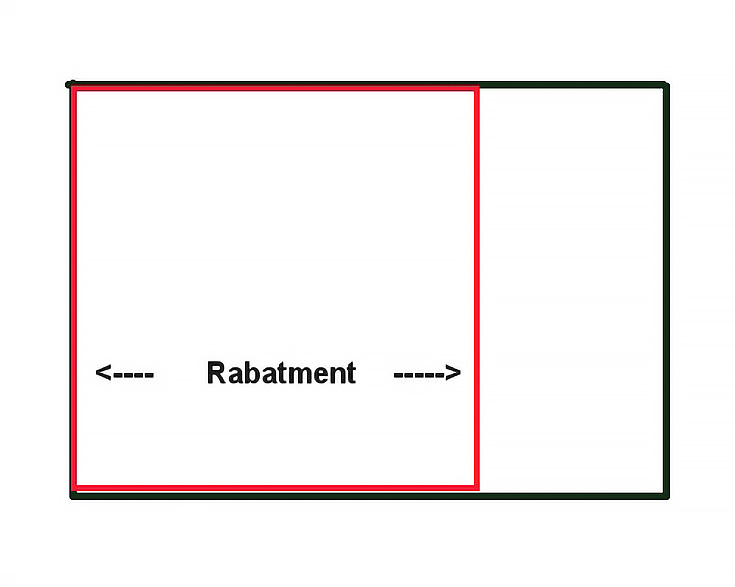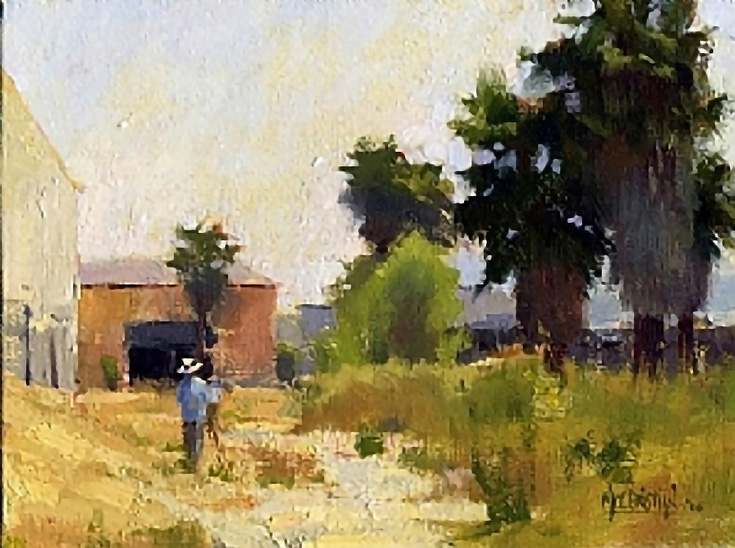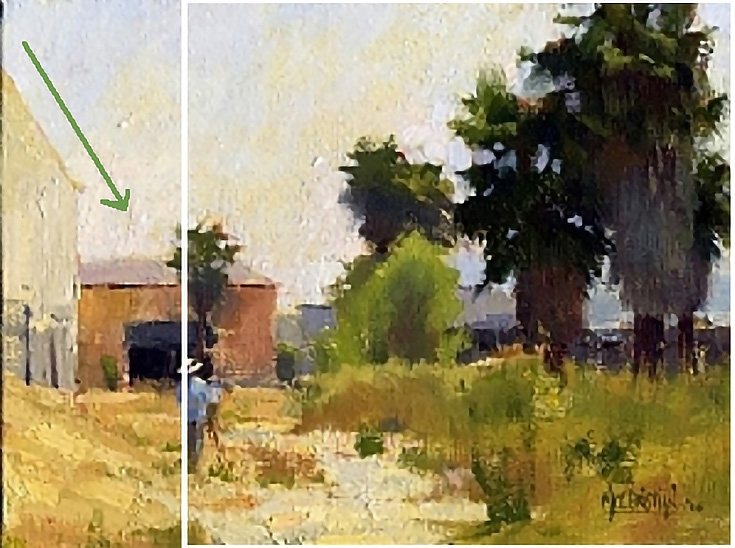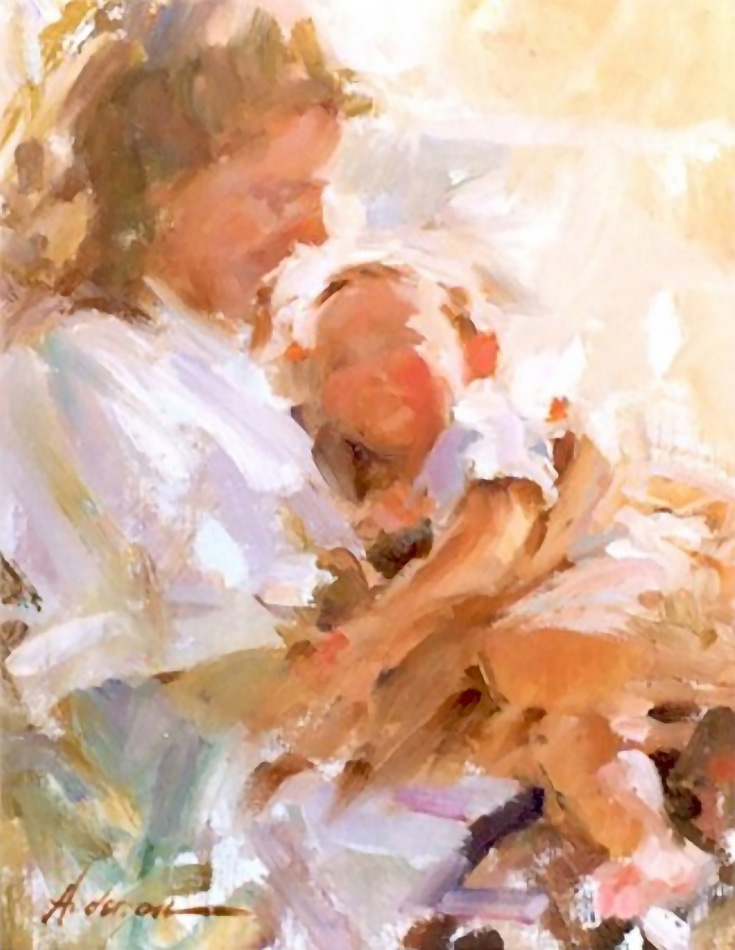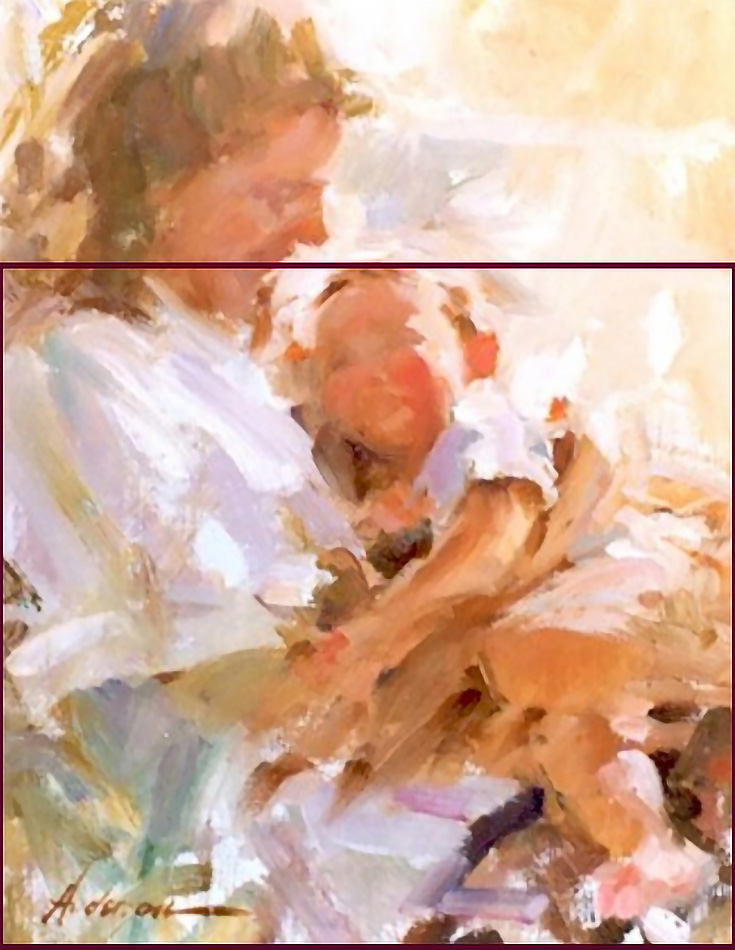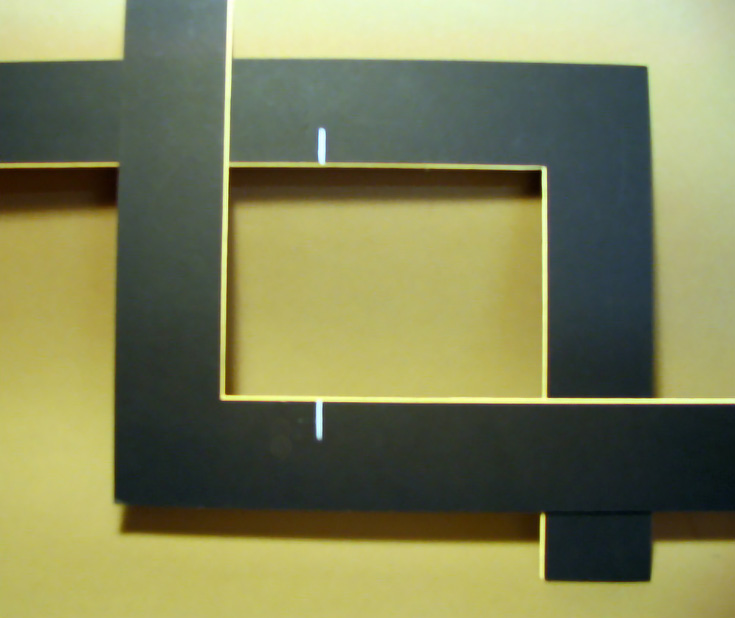Painters rely on an array of methods for finding the best placement of their subjects within a painting’s edges. One of the easiest methods to use and understand is to place the subject within the rabatment of the rectangle.
What is the rabatment of a rectangle?
Simply put, it’s the perfect square found inside any rectangle (the rabatment’s sides are all equal to the short side of the rectangle).
For each horizontal rectangle, there is a right rabatment and a left rabatment. For each vertical rectangle there is an upper and lower rabatment. Placing the most important subjects within either of these squares helps to create a composition that your viewers will perceive as unified, harmonious and balanced.
Even though the primary subject may be placed inside the rabatment, artists still find a variety of roles and uses for the section outside the rabatment. For example, look at this painting, entitled Bill Painting Near Old Levitz Lot by Jennifer McChristian.
The figure (which is the center of interest) is located directly on the edge of the rabatment, with the trees located inside it. Outside the rabatment is an obliqued-shaped building that redirects the viewer’s eyes to the center of interest.
Another way artists use the area outside the rabatment is to complete whatever story is being told, like in this painting by Carolyn Anderson.
Notice how the two spaces work in concert: the baby fits entirely within the rabatment while the head of the mother looks down at the infant from outside the rabatment.
An artist’s natural sense of design will often lead to rabatment placement automatically, but there are two methods for using this strategy intentionally.
Method 1: Adding on to a sketch
1. Do a preliminary sketch of the subject you plan on painting. (In the example below, I’ve done a drawing of a busy squirrel.)
2. Create a square around the major activity in the drawing.
3. To the right, left, top or bottom, add enough space to match the ratio of the canvas you plan to use. (The ratio I used is 2:3 which matches up with a 16×24 inch canvas.)
Method 2: Using a special viewfinder
1. Make a rectangular viewfinder with a window that is the same ratio as your planned canvas. So if your canvas is 16×20 inches, your ratio should be 4:5, or 4×5 inches.
2. On the long sides of the viewfinder’s frame, mark where the rabatment begins.
3. Look through the viewfinder to plan your composition. Position it so that the main area of interest lies within the rabatment and then use that for your composition.
Just as it isn’t clear why using the Golden Ratio in art gives such a pleasing composition, no one knows for sure why using the rectangle’s rabatment gives balance, harmony and unity to a composition.
Whatever the reason may be, as you experiment with rabatment you’ll find that you’re producing stronger compositions and more interesting paintings than ever before.
This post may contain affiliate links.
